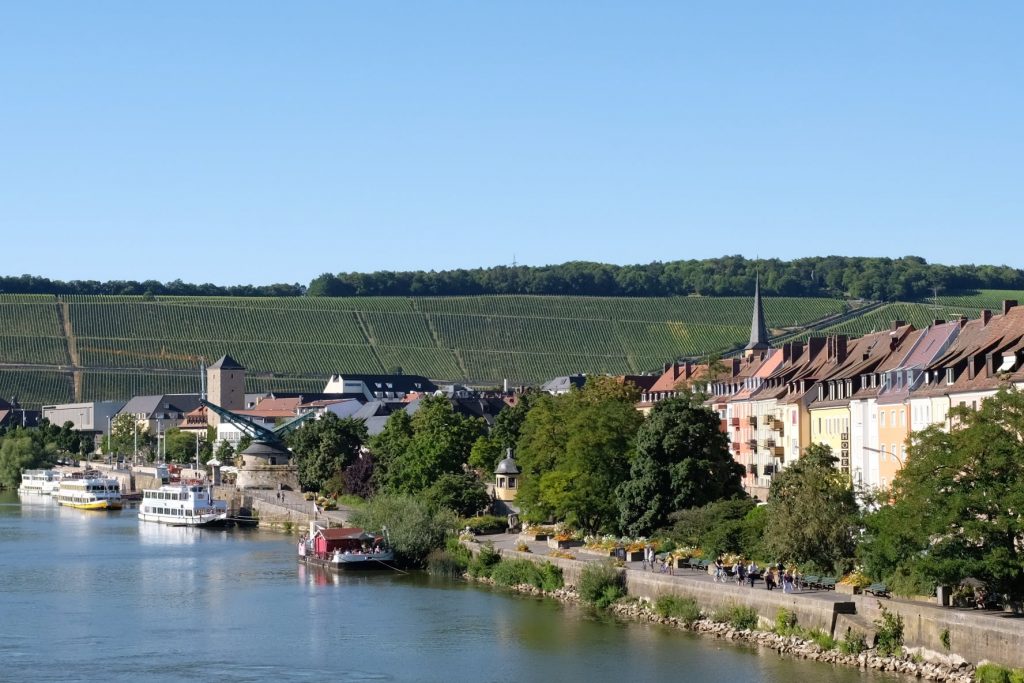I’ve had the chance to meet with students and teachers at three German schools during this TOP Tour. I’ve learned a lot, so this is a lengthy post. The descriptions below vary from state to state in Germany since each state runs its own schools and designs its own exams.
Apprenticeships
Germany is known for its apprenticeship program. Students can choose to have on-the-job training by becoming an apprentice in over 300 fields. I met students who were planning apprenticeships as teachers, woodworkers, in the travel industry, banking, as future doctors, and many others. On a vineyard tour, I even met a former apprentice who studied the agriculture of grapes. On the surface, this sounds like a great system, and something US schools should do more of. Many students enter the job market straight from their apprenticeship.
Our group also learned of some downsides of this system. Some Germans complained that apprenticeships are nothing more than free labor that businesses take advantage of. On the other hand, the apprenticeship system does not have the stigma that vocational education in the US has. It is generally respected and considered an option for all students, not just those who are not performing well academically. Twenty-five percent of students from the highest-level schools (gymnasium) choose the apprenticeship route. At our visit to Deutsche Bank headquarters in Frankfurt, we were told more than once that the CEO started as an apprentice.

High-Stakes Testing
Not all students follow the apprenticeship route. Some will enter university directly from high school. Universities are free in Germany, including graduate and doctoral level programs. Getting into these programs, however, can be very competitive, and can be determined as early as age ten. At the end of elementary school, students take a test to determine what type of secondary school they will attend. Options vary from state to state, but basically, students are tracked to certain schools depending on this one exam.
The “gymnasium” is the highest level and is required for entering university. Students here must master English and another foreign language. The “realschule” and the “hauptschule” are the next levels. These students will generally enter an apprenticeship, complete some other type of vocational program, or possibly transfer to a gymnasium if they want to enter university. Vocational schools are at the lowest level but still offer extensive vocational training.
There are separate schools for students with special needs, though some of these students are integrated into the regular schools. Germany has a 37% inclusion rate for special education students, compared with a 95% inclusion rate in US schools.
Separating students at age ten based on an exam is one of the biggest criticisms of the German system. When asked about students who might not perform well on exams but are still intelligent, one administrator said, “Grades are the only way to determine a student’s ability.” About 20% of students have had to repeat a grade due to failing two or more end-of-year subject exams.
Students can move between the different types of secondary schools, either up or down, depending on their performance. It is not clear how common this is. Students without a university degree are paid 74% less than students with a degree. Seventy-nine percent of students who reach university have parents with a university degree, while just 24% of students whose parents do not have a degree reach university.

Democratic Schools
After meeting with a family in Berlin, we were invited to visit another type of school that two of their children attend, a democratic school. The Netzwerk-Schule in Berlin was founded ten years ago and modeled after Sudbury Valley School in Massachusetts. The school’s founder gave us a tour of the building and answered many questions. Although it was summer vacation already, many students were at the school hanging out and learning on their own.
Democratic schools, which can be found around the world, are structured around human rights. These schools believe that children should have the basic right to learn whatever they want to learn. At the Netzwerk-Schule, students arrive between 8:00 and 10:00 and are expected to stay for at least five hours every day. Rooms are set up for playing, quiet studying, building, sewing, technology, sculpting, and more. Students create their own schedule every day. The teachers do not plan what students will learn, but are there to help children when asked. There are no exams or grades. This is definitely the opposite of the rigid German system.
Students and teachers (not parents) are voting members of the school community. They decide the rules and hold regular meetings. They also handle all disagreements through a court system run by the students. There is even an appeal process for those who disagree with the court’s verdict. Students and teachers sign up to work on committees, including the hiring of teachers. Teachers need to be rehired every year.
This TOP Tour has given me access to schools, teachers, students, administrators, and parents who have all shared their insights and opinions on the German education system. I know there is much more to learn. Nevertheless, I am left knowing that there are many strengths and weaknesses to this system, and though it may work well for some students, Germany, like the US, struggles to address the needs of all learners and provide equal access to a high-quality education.

More School Facts
Schools generally end by 1:00 pm. Sports are usually held at private clubs in the afternoons. Some schools offer optional classes and extracurricular activities in the afternoons.
According to one administrator we talked to, public schools in Germany are fairly equal across each state. Most of the funding for schools comes from the states and does not depend on the wealth of each community.
Some schools we visited had SMART Boards, but technology was not used by most of the teachers and students during class.
It is common for administrators in Germany to also teach some classes.
Homeschooling is illegal in Germany.
Parents can be fined for taking students out of school during classes.
Here are some scenes from Würzburg, where we visited two schools.










Finally, here are some sixth-grade students practicing their English.
Sources
The information above comes from interviews, presentations, and conversations at the three schools I visited: Jakob Stoll Realschule and Deutschhause Gymnasium in Würzburg and the Netzwerk-Schule in Berlin. I also included information presented in a lecture by Dr. Wolf Wagner, a political scientist and author in Berlin.





July 14, 2018 @ 18:11
Great read, Tim! It was an AMAZING experience observing all these schools together. Lots to learn and things to implement. Prost!
July 15, 2018 @ 06:56
Danke schön, Mike. Glad you made it home safely. Let me know when you want to open a democratic school!
July 14, 2018 @ 18:30
Wow! Staggering statistics and interesting educational philosophies! You’ll have a lot to offer next year as we design our new middle school experience!
July 15, 2018 @ 06:58
Definitely had SMS on my mind during these school visits.
July 15, 2018 @ 13:23
Wow, again, Flanagan!
See ya soon!
July 16, 2018 @ 08:16
Thursday night, midnight. See you then. Thanks!